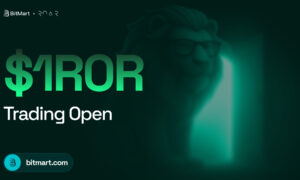NFT gaming is in search of a fine balance between the speed and efficiency of new blockchains and the convenience of EVM, or Ethereum Virtual Machine. The team behind the new NFT-optimized Wakatta blockchain explains the importance of EVM for the future of the NFT industry – and its faults.
New gaming-optimized blockchains challenging EVM chains
Of all types of blockchain apps, games and metaverse projects are perhaps the most resource-intensive, as they rely heavily on NFTs. Minting and trading characters and equipment, staking and claiming NFTs – in most networks, these transactions require much more computational effort than simple token transfers. Consequently, blockchain fees can accumulate fast.
Scalability and processing are an even bigger problem than fees. A popular game can generate hundreds or even thousands of transactions every day, which can clog a less performant blockchain.
This is what happened with CryptoKitties on Ethereum in late 2017, when the blockchain virtually froze – and it happened again in April 2022 because of the virtual land sale in the Otherside metaverse.
These examples show that Ethereum with its 25 tps and its $3+ fees can hardly sustain a large gaming ecosystem. This is the reason why most Play2Earn games migrated to chains like BSC, Harmony, Avalanche, and Polygon.
All these blockchains have something in common: they use EVM (Ethereum Virtual Machine). This is a virtual framework within which all Ethereum smart contracts are executed, and it’s an essential part of the blockchain ecosystem.
However, EVM has some serious flaws: it’s inefficient, costly, and prone to security vulnerabilities, since smart contracts are difficult to proofread for bugs. And while a couple of years ago there were virtually no alternatives, now there is a new generation of scalable, cheap, and fast blockchains that use a completely different technological stack – for example, Wakatta, WAX, Polkadot, Kusama, etc.
Wakatta blockchain executive: ‘EVM is like USB’
Out of the top 20 crypto games on DappRadar, over half run on at least one EVM-compatible chain.
Why does Ethereum’s EVM technology have such a strong hold over the industry – and should games break from it? Alexander Rumyantsev, DLT product lead at Wakatta, explains:
‘Most smart contract developers know EVM and Solidity, the language of Ethereum. They feel comfortable working with these tools. Plus, you can migrate or expand any game from one EVM chain like Polygon or BSC to another. In a way, EVM is like USB: you can make a faster and better connector port, but will the public accept it?
It’s a very fine balance: you want to launch a game or metaverse on a fast and very cheap blockchain, because who wants to play a slow and expensive game where the rewards don’t cover the fees? But you also want an EVM-compatible chain, so that you can expand into other ecosystems, find developers, and so on.
When we designed Wakatta, we took both these factors into consideration. The result is an EVM-compatible chain that leverages all the technological innovations of Substrate. It’s a perfect combination for any game or NFT project.’
How Wakatta combines the power of Substrate and native EVM support
Wakatta is one of the first blockchains optimized for NFTs, gaming, and the metaverse. It is built using Substrate, the modular framework that powers Kusama and Polkadot. Thanks to this, Wakatta will be compatible with their ecosystems.
At the same time, while Polkadot and Kusama don’t support smart contracts or EVM natively, Wakatta does. In the future, Wakatta can even become the crucial connecting link between NFT and gaming protocols built on Polkadot and EVM chains. It may come to play a similar role to Moonbeam and Acala, which act as EVM hubs for DeFi on Substrate – only for gaming.
Interestingly, another gaming-oriented blockchain, WAX, announced an EVM implementation in September 2021, while the Hive blockchain (which the popular game Splinterlands runs on) has also been exploring the possibility of launching a bridge to EVM chains or an EVM sidechain.
Unlike these chains, Wakattta supports EVM out of the box, which can make it the first choice for many metaverse platforms and games.
3 new types of NFTs: what makes Wakatta different from other EVM chains
Compatibility with the Ethereum Virtual Machine isn’t the only advantage of Wakatta. On a more practical level, Wakatta introduces several groundbreaking new types of non-fungible tokens:
- Time-limited NFTs: collectibles that change their characteristics at a predefined moment – a very useful feature for games and metaverse events.
- Upgradable NFTs: these can be changed over time at will – for example, in the process of co-creation by the holders and the original artists.
- Non-hashed or text-rich: they allow NFT issuers to save data in the smart contract without adding new code.
On top of all this, Wakatta intends to have a very high processing capacity: over 1,000 transactions per second. For comparison: BSC can manage only 60 tps.
Wakatta’s tiny transaction fees may also attract many NFT gaming projects. Minting or sending an NFT could potentially cost as little as $0.001 in WKT – versus $50 or more on Ethereum.
Wakatta was first introduced at the Token2049 event in London in late 2021 and has already partnered up with several major projects like Roborace and.ART. The digital metaverse of Sensorium Galaxy will also migrate to Wakatta, as both are developed by the same team. Many dozens of other gaming and NFT projects are expected to follow once the incentivized testnet launches in 2022.
EVM has a first-mover advantage in the world of NFTs, with a vast pool of developers, marketplaces, and collections hosted on EVM-compatible chains. Instead of trying to ‘go it alone’ on a non-EVM chain, NFT games can reach out to a much wider audience and tap into maximum liquidity by choosing an EVM-compatible network built using superior technology, such as Wakatta.



































